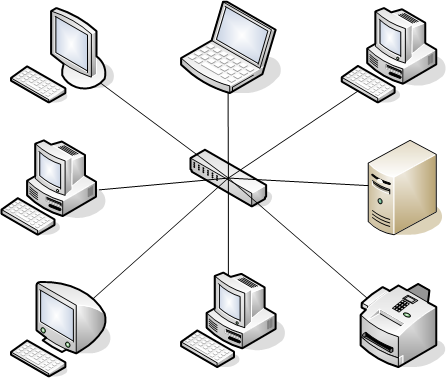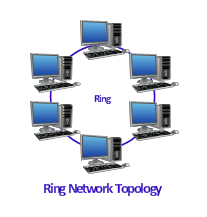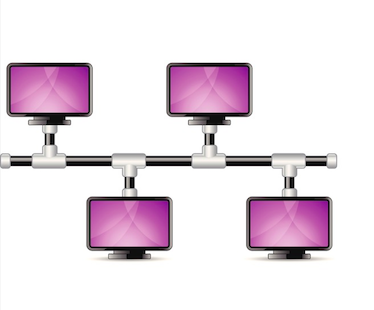Industrial networks are many and varied. They can be distinguished from one another in a variety of ways, one of which is the topology of the network; in other words, how the devices on the network are connected together and how they exchange information and communicate with one another.
There’s also a distinction between two kinds of topology; physical and logical. Physical topology refers to how physical devices are placed and connected together with cables. In contrast, logical topology is about how data and information flows within the network. The two types of topologies can overlap, but they don’t necessarily have to.
There are a number of topology types, but here we’ll focus on three of the most common in the industrial/motion control world; the ring, star, and bus topologies. (Other types include point-to-point, mesh, and hybrids of these types.)
Ring – Each node in a ring topology connects to exactly two other nodes. This forms a single pathway for signals through each node of the network, which resembles a ring. Messages or frames travel through the entire ring and can theoretically be picked up and/or read by any device on the ring.
Among the benefits of ring topologies are the lack of any central controller to manage the messaging between devices. It’s also easy to find and isolate a fault on the network and reconfiguring or adding devices is relatively simple. On the downside, more devices on the network can slow transmission speeds and cause delays. It’s also more difficult to configure than other network topologies such as a star network.

An illustration of a star topology, with the central hub and nodes connected to it. (Image via Wikipedia)
Star – Also known as a spoke and hub configuration, in this setup devices are connected not to one another but rather to a central master/controller or hub. So messages can’t be passed from one device to another directly but must go through the central master/controller.
The most significant benefit of star topologies is that the failure of one node doesn’t impact the rest of the network. It’s also simpler to add devices on the network as the only connection is to the central hub. On the other hand, the central hub is the main point of failure, so if it fails the entire network stops working. Plus, adding devices to the network requires additional cabling, which can get expensive as the device count rises.
Bus – In a bus topology, all devices (or nodes) are connected together through a common link called the bus. Each node on the bus receives all the network traffic.
One of the benefits of bus networks is the ease of connecting devices onto the network, which generally requires less cabling than a star topology, for instance. Also, failure of a node does not impact the rest of the network. On the downside, a network cable failure shuts down the entire network. Also, adding nodes can slow down the network.
Filed Under: Motion Control Tips







Tell Us What You Think!